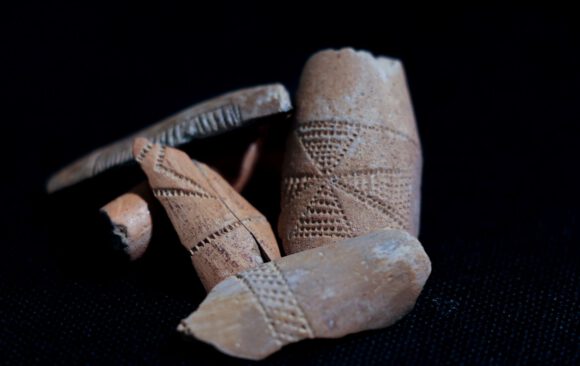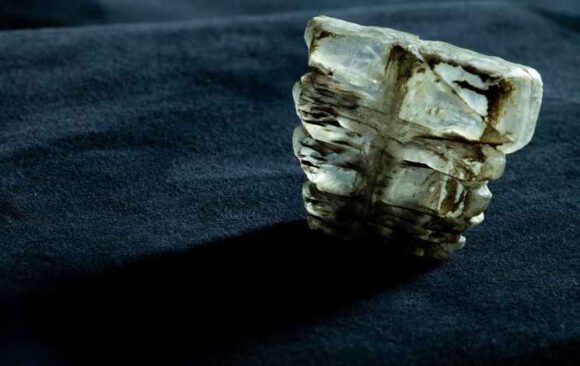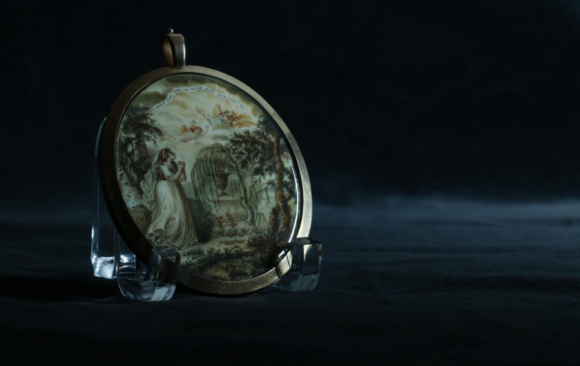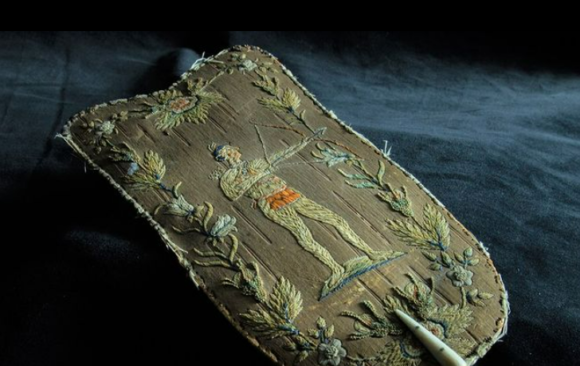New Exhibit: STRATFORD AT THE CROSSROADS: ATLANTIC CULTURES & CREATION OF AMERICA
Our curatorial team has put together a stunning exhibit that focuses on material culture, colonization, colonial women, and historic preservation at Stratford Hall. The gallery has completely transformed into a modern space, prime for reflection, education, and visitor engagement. The exhibition contains 18th-century maps of West Africa and the Atlantic world, portraits of Lee women, cameos of enslaved African women, Lee family clothing, 18th-century furnishings, mourning jewelry, Native American material culture, archaeological artifacts, West African objects that survived the middle passage, architectural treasures, and significant objects related to all of those who lived at Stratford Hall.
The style of the new gallery is modern by design. Visitors won’t find paragraphs of information on the walls, but rather each guest will receive a booklet to keep, designed by Curator Amy Connolly, which will guide them through the exhibit, object by object.
Stratford Hall’s Director of Collections and Visitor Engagement, Dr. Kelley Fanto Deetz, and Curator, Amy Connolly, share some of their favorite pieces from the new exhibit.
We are thrilled to announce the exhibit is now open and part of the tour experience!

Pipe fragments, c. 1640s
Clifts Plantation archaeological collection
These pipe fragments were excavated from the Clifts plantation site, and were locally made by enslaved Africans. They would use local clay to mold pipes, then personalize them by carving ethnic marks into the clay. They were low-fired in the hearth, and used by their maker or traded with locals.

Etched Crystal
This crystal was found in the interior of the north east windowsill of the Great Hall during renovations in the mid-1900s. This object would have been intentionally placed in the windowsill, likely by one of the original enslaved carpenters. The X mark on the face of the crystal is found on both sides, and is symbolic of the crossroads or Kongo cosmogram; symbols commonly used to conjure spirits for protection. The X marks the lines between the physical and spiritual worlds, birth and life, and the juncture is the spot where the spirits can cross over and protect the living. The cosmogram was used throughout the African diaspora as a mode of conjure and protection. Similar X marks have been found on a wide range of objects, from spoons to pots, and are emblematic of the continuity of spirits and the religious practices of the enslaved Africans and their descendants throughout the colonies.

Emily Lee Mourning Pendant
c.1817-1818, watercolor on ivory, hair, pearl, enamel
Courtesy of The Society of the Lees of Virginia.
The neoclassical movement was a prevalent part of the late eighteenth century society and even extended into the early nineteenth century, shedding light on a new artistic and moral outlook on death. Neoclassical memorial pieces often contain many symbolic layers behind their sepia tones, with several recurring themes represented through the scenery. This piece, painted on ivory, commemorates the death of Emily Lee, and was commissioned by her parents, Ludwell Lee and Elizabeth Armstead. The reverse side of the pendant contains a lock of Emily’s blonde hair fastened with four pearls on a reflective blue guilloche enamel ground. The pearls here are significant and indicate the loss of a child. The mother’s hair is also featured, entwined locks of grey and dark blonde are plaited in a protective circle around the child’s hair.

Embroidered Fans, c. 1770-1800, embroidered with moose hair on birch bark
Gift of The Henry Francis duPont Winterthur Museum.
Two Iroquois Indian hand screens, or fixed fans, made of birch bark, with embroidered depictions of Native Americans and a floral border in moose hair. The design has been embroidered with porcupine quills and the flat screens are attached to turned ivory handles. Fan etiquette became popularized in the eighteenth and nineteenth centuries, women could relay hidden messages or make subtle social cues just by holding or moving their fans in certain ways. Joseph Addison, publisher of The Spectator in the 1700s, stated that, “Women are armed with fans as men with swords, and sometimes do more execution with them.” These were produced specifically for the trade market, and were cherished by the colonists.

